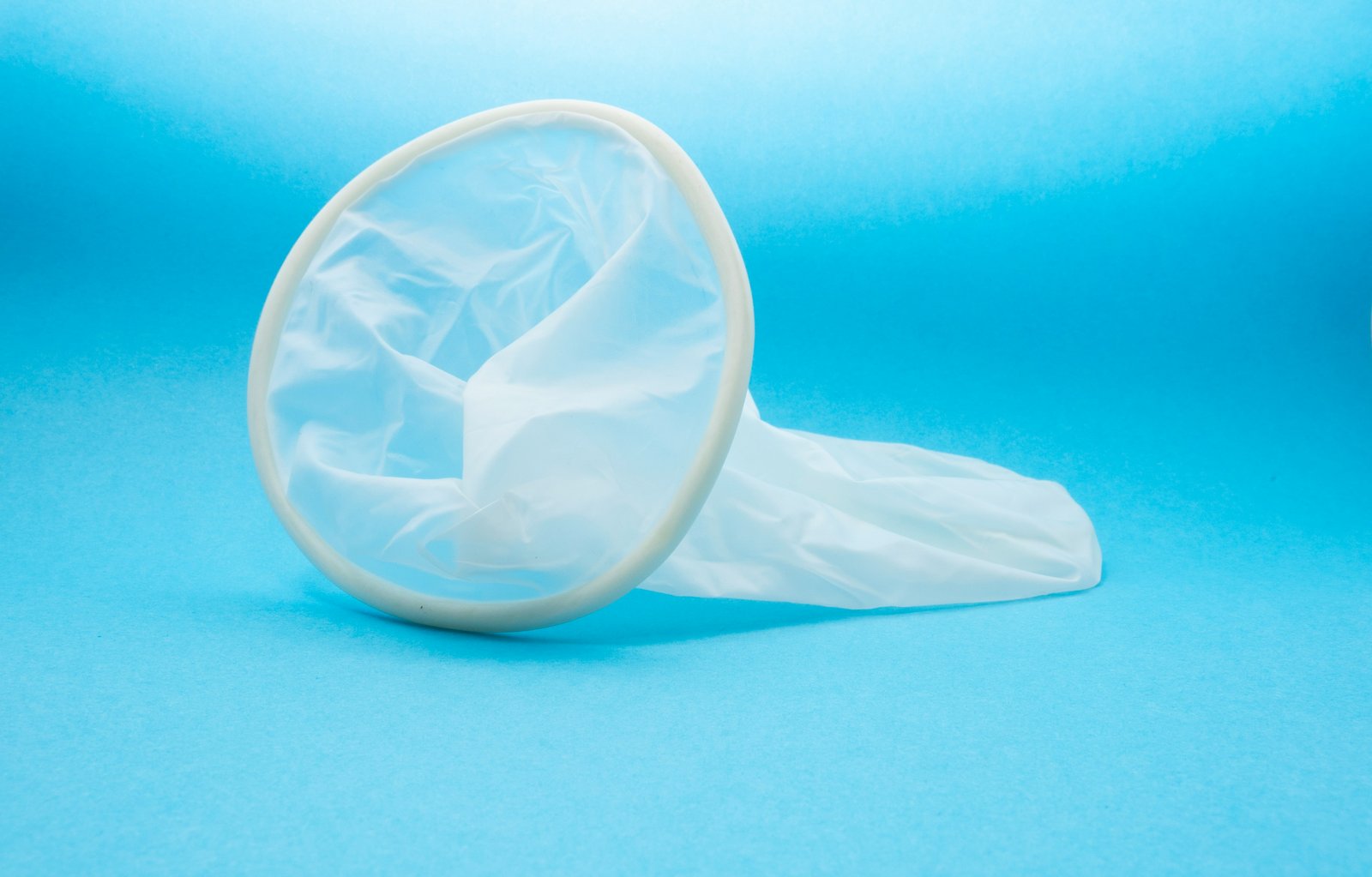
Latex allergy - What do you need to consider with condoms?
Have you ever heard of latex allergies or wondered if you might have a reaction to them, especially when using condoms? In this comprehensive blog post, you can find out everything you need to know about latex allergies, their symptoms, treatment options and what you need to consider when using condoms.
What is a latex allergy?
A latex allergy occurs when the immune system reacts excessively to certain proteins in natural latex. Latex is obtained from the milky sap of the rubber tree and is used in numerous products, from medical gloves to condoms. Contact with latex products can cause allergic reactions such as reddening of the skin, swelling, itching or even serious reactions such as anaphylactic shock.
There are different forms of latex allergy. One is the immediate type allergy, in which the proteins in the latex are the triggering substance and the immune reaction often occurs within minutes. On the other hand, there is the late-type allergy or contact allergy: here the allergy only develops over time and a rash often only appears after several hours or even days.
How common is a latex allergy and who is particularly at risk?
Latex allergies are not uncommon. Around 1-2% of the population worldwide are affected. People who come into frequent contact with latex through their job, such as medical staff, and people with certain pre-existing conditions, such as spina bifida, are at a particularly high risk.
Symptoms of a latex allergy
Symptoms can vary depending on the type of allergy and the route of contact. In the immediate type, reactions such as coughing, shortness of breath, skin rash or even anaphylactic shock occur immediately after contact. In the late type, which is triggered via the skin, symptoms only appear hours to days later in the form of eczema or reddening of the skin.
Development of a latex allergy
The exact mechanisms that lead to the development of a latex allergy are not yet fully understood. However, there are some risk factors and theories:
- Genetic predisposition: some people have an inborn predisposition to develop allergies easily.
- Early childhood sensitization: Frequent skin contact with latex products (e.g. pacifiers) in childhood.
- Multiple exposures: Repeated intensive contact, especially in healthcare settings.
- Structural defects: Individuals with spina bifida often have a weakened immune system.
- Chemical additives: In addition to natural latex proteins, chemicals in latex could promote allergen formation.
It is assumed that allergic sensitization occurs in several steps. First, the immune system recognizes the latex proteins as foreign bodies, whereupon antibodies are formed. On renewed contact with latex, histamines and other messenger substances are then released, which trigger the allergic reaction.
What needs to be considered with condoms?
Conventional latex condoms are not an option for people with a latex allergy. They can cause unpleasant or even dangerous allergic reactions.
While only around 1-2% of people have a genuine latex allergy, as mentioned above, some people can react sensitively to other ingredients in condoms. These can be additives in the lubricant coating, for example. Our Mister Size condoms are coated only with pure, high-quality silicone oil and are therefore particularly skin-friendly. If you are unsure, we recommend testing a 3-pack first. It can also be helpful to discuss the ingredients with your doctor or pharmacist. You can find a full list of our ingredients in the description of each product in our store.
Incidentally, condoms can also cause a slight burning sensation if there is not enough moisture and the condom rubs against the inner vaginal wall. To avoid this problem, we recommend using Mister Size organic lubricant, which has been specially developed to provide additional moisture and comfort.
Fortunately, if you are genuinely allergic to latex, there are also latex-free alternatives made from materials such as polyurethane or polyisoprene, which can be used safely for both contraception and protection against sexually transmitted diseases. Unfortunately, latex-free condoms are not yet available in all possible condom sizes, as is the case with MISTER SIZE. This means that the latex-free condoms available on the market do not fit every man and can therefore be uncomfortably tight or the condoms are too loose and can therefore slip off more easily.
A good alternative if latex-free condoms do not fit in terms of size are so-called female condoms, as these are very often latex-free. As the name suggests, a female condom is used by the woman instead of the man. Roughly speaking, the condom is not rolled over the penis, but the woman inserts a larger condom into her vagina. This ensures protection against pregnancy and sexually transmitted diseases and there are no problems with the wrong condom size or latex allergy.
Why are there still no latex-free condoms in different condom sizes?
In many countries around the world, as in Europe, condoms are medical devices and require approval. As soon as a characteristic of a medical device changes, for example the size or material of a condom, it needs its own approval. These approvals are very time-consuming and expensive; after all, the safety of a condom needs to be guaranteed. In addition, new materials often face legal hurdles such as patent protection and the associated license fees. These hurdles, together with a 1-2 percent share of latex allergy sufferers in the population and thus a smaller product target group, lead to significantly higher costs per condom and make it difficult to offer such a product at a reasonable cost in terms of market economy.
Treatment and management of a latex allergy
The most effective treatment is to avoid contact with latex products. Those affected should inform themselves about products containing latex and choose latex-free alternatives. If allergic reactions have already occurred, antihistamines or cortisone ointments can provide relief. In severe cases, such as anaphylactic shock, immediate emergency medical measures are required.
Precautionary measures and latex-free products
In addition to switching to latex-free condoms, there are other precautions to avoid contact with latex:
- Pay attention to product labeling and ask if unsure
- Inform medical staff about your allergy
- Be careful not to use latex products unknowingly, as it is contained in many products that you often don't even think about
- Carry an allergy card with you and have your emergency medication to hand if you suffer from a severe form of allergy
It is therefore important to always pay close attention to the ingredients and product labels. If "latex" or the scientific term "natural rubber" is listed, latex allergy sufferers should avoid the product. Cryptic terms such as "rubber" or "elastic polymers" can also indicate latex content. According to the German Allergy Information Service, for example, there are over 40,000 everyday products containing latex.
To prevent latex exposure, it is advisable to use alternative products made from materials such as vinyl, silicone, polyurethane or neoprene. In medical facilities and at the workplace, staff should be informed about the latex allergy so that appropriate precautions can be taken. Caution should be exercised with descriptions such as "low allergen", which is actually misleading, as there may be fewer allergens, but they are still present.
Products that contain latex are for example
- Medical products: Gloves, catheters, face masks, implants
- Household products: Gaskets, rubber bands
- Clothing: tights, swimwear, shoe soles
- Sanitary products: Condoms, pacifiers, diapers
- Office supplies: Erasers, stamps
- Leisure articles: Air mattresses, sports mats, balls, dolls, balloons
- Car: tires, sealing rings in engines/transmissions
Fortunately, as mentioned above, there are good alternatives made from other materials without latex for many products.
Latex-free alternatives
Medical products:
- Gloves: nitrile, neoprene, vinyl
- Catheters: Silicone, thermoplastics
- Face masks: Silicone, polypropylene
- Implants: Silicone
Household goods:
- Gaskets: Silicone, foam, glass fiber fabric
- Rubber bands: elastane, polyester
Clothing:
- Tights: nylon, cotton, polyester
- Swimwear: polyamide, polyester, recycled PET
- Shoe soles: EVA foam, thermoplastic rubber (TPR), polyurethane
Sanitary products:
- Condoms: Polyisoprene, polyurethane or if condoms are not available in the right size, many female condoms are also available
- Pacifiers: silicone, thermoplastic elastomer
- Diapers: cloth diapers without latex content
Office supplies:
- Eraser: vinyl, plastic
- Stamps: wood, acrylic glass
Leisure articles:
- Air mattresses: PVC, polyurethane, thermoplastic polyolefin
- Sports mats: PVC, EVA foam
- Balls: PU-coated fabric, thermoplastic rubber
- Dolls: Vinyl, silicone
Possible cross-reactions
People with a latex allergy have an increased risk of also having an allergic reaction to other substances. This is known as "cross-reactivity" and mainly affects proteins that have a similar molecular structure to the latex proteins that cause the allergy.
Some common cross-reactions in latex allergy:
- Foods: avocado, banana, kiwi, chestnut, lychee, garlic, potato, buckwheat, tomato, celery, bell bell pepper, peach, fig, passion fruit, papaya, pineapple, mango, melon, dates, hazelnut, cashew, walnut
- Pollen: Bermuda grass, olive, cypress, castor oil plant
- Other plants: Gum arabic, ficus benjamini, papain, ficaine, mulberry, oleander, hemp, christmas thorn, periwinkle
These cross-allergies can lead to symptoms such as skin rashes, gastrointestinal complaints, breathing problems or even anaphylactic shock. Those affected should avoid the potentially cross-reactive substances or have them checked out by a doctor in advance.
Research approaches and possible future treatments
Although there is currently no cure for latex allergies, researchers in various fields are working on new approaches to alleviate symptoms and desensitization. Some promising studies are looking at:
Allergen avoidance
Manufacturers are working on the development of new, hypoallergenic latex materials by removing or modifying the allergenic proteins. Initial clinical studies with such products are showing encouraging results for latex allergy sufferers.
Immunotherapy
Allergen-specific immunotherapy (AIT) aims to "retune" the immune system to the substance through controlled allergen administration. Some studies with modified latex allergens indicate a possible desensitization and reduction of symptoms.
Biologics
Anti-IgE antibodies such as omalizumab could inhibit the activity of the IgE antibody responsible for allergic reactions. Studies have shown an alleviation of latex allergy symptoms.
Modification of origin
As latex proteins originate from the tropical rubber tree, research is being conducted into genetically modified, hypoallergenic variants. Such modifications could reduce the allergenicity of the source material.
Although none of these methods have yet reached market maturity, the progress made shows the great interest and potential for more effective treatments for latex allergies in the future.
Conclusion
Latex allergy is a serious condition, but it is manageable if you know how to deal with it. Especially when it comes to contraception, it is important to find out about latex-free condoms or alternatives such as the female condom and to use them to avoid unpleasant reactions. By being aware of products containing latex and using alternatives, you can lead a carefree and safe sex life despite a latex allergy.
